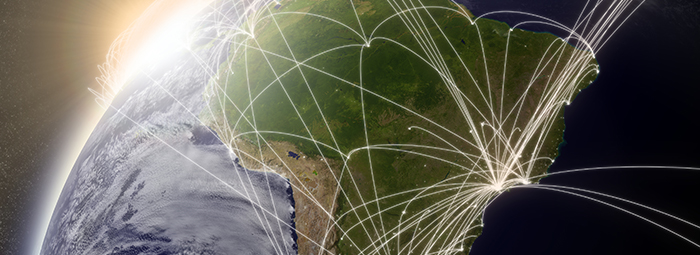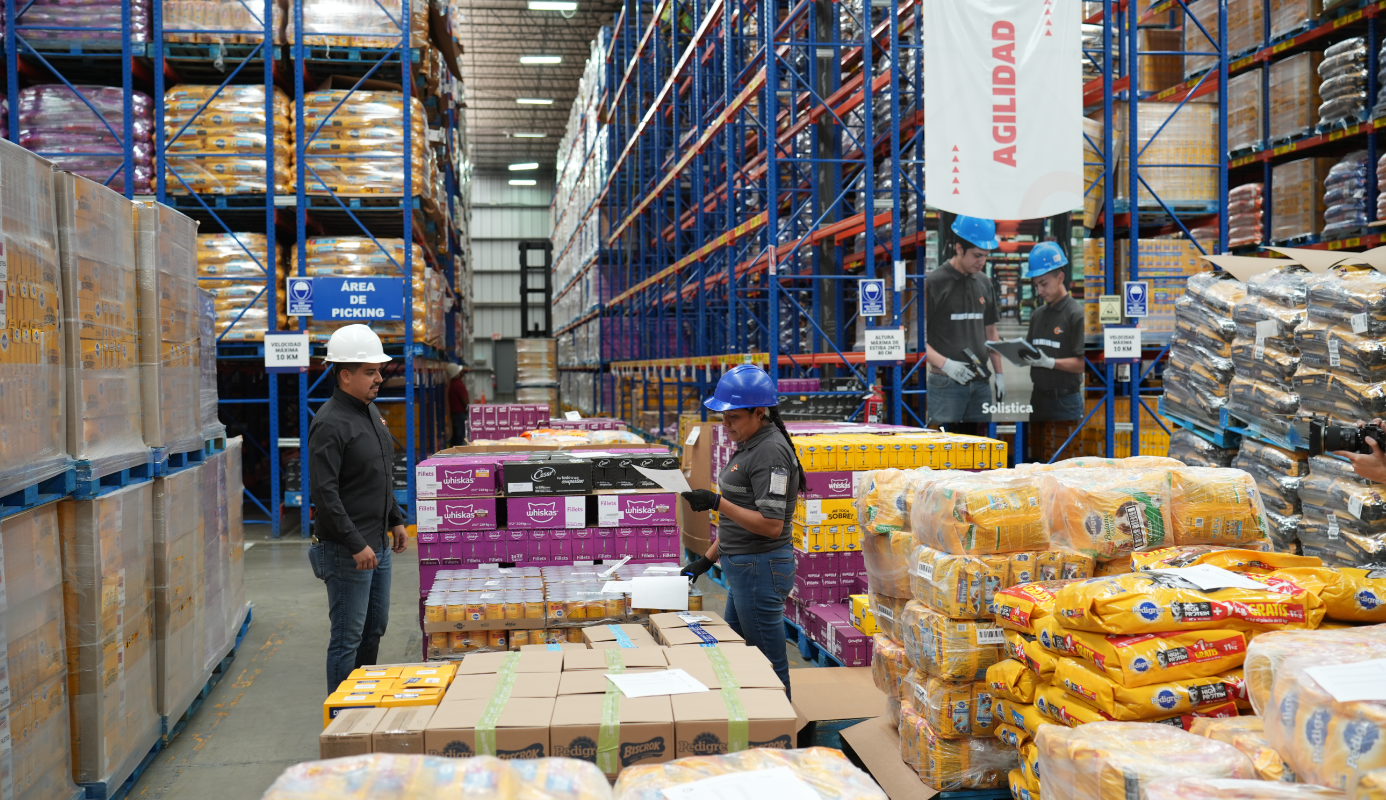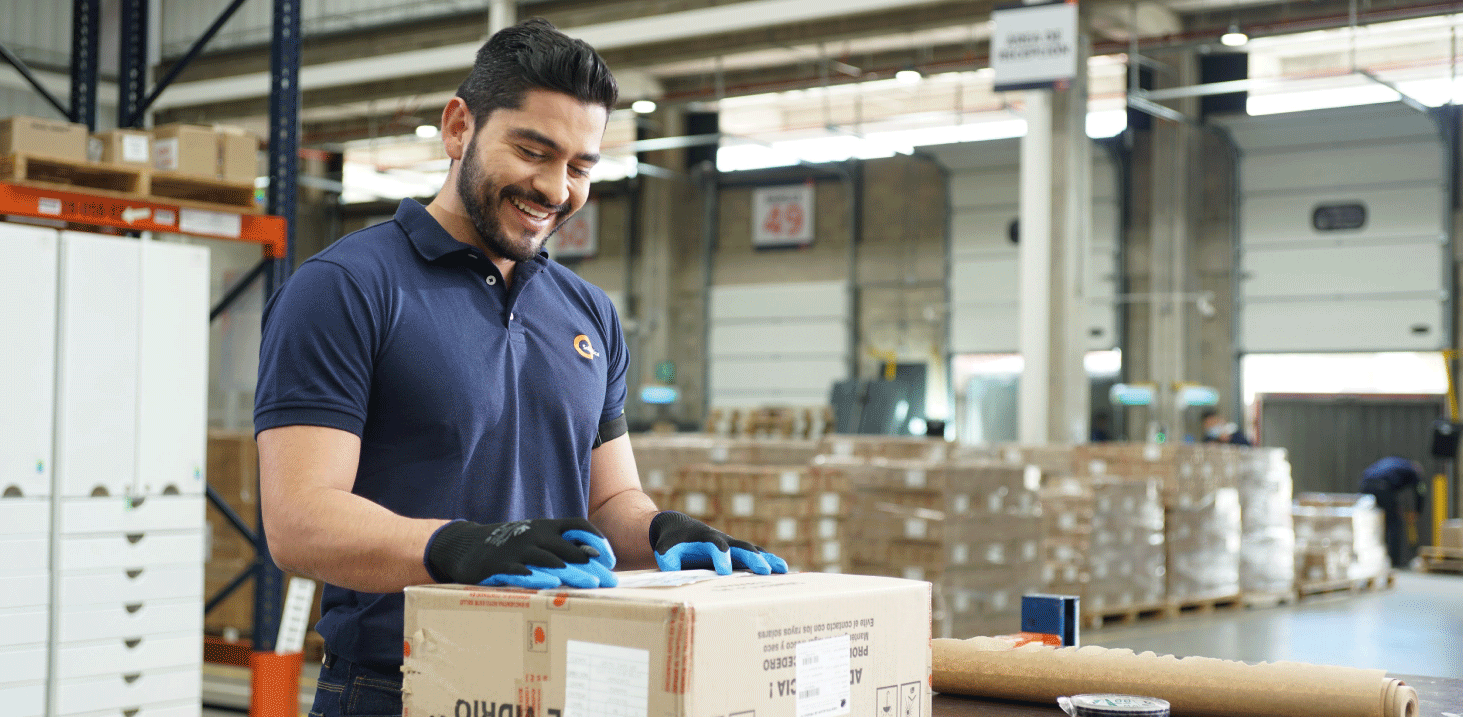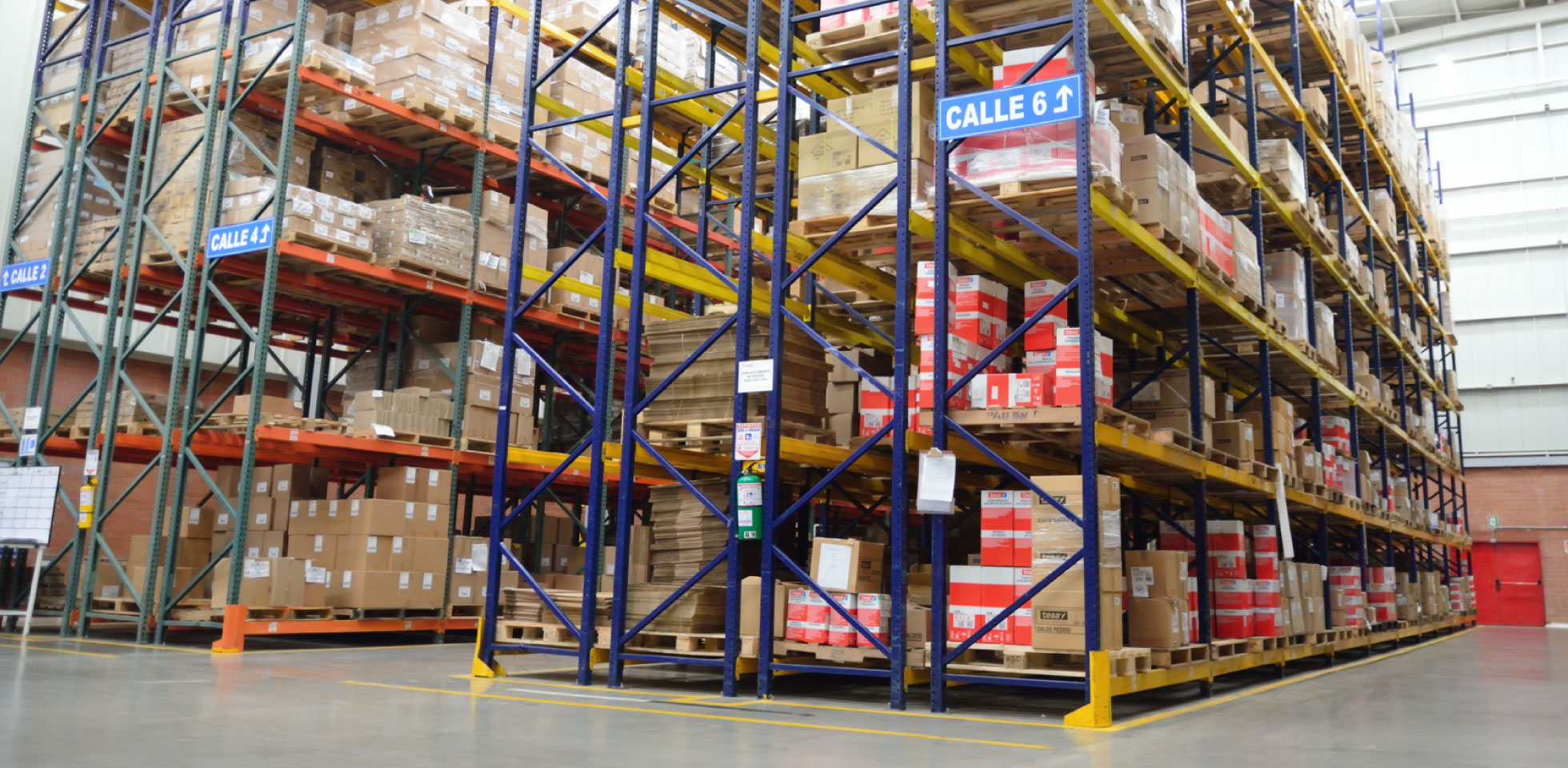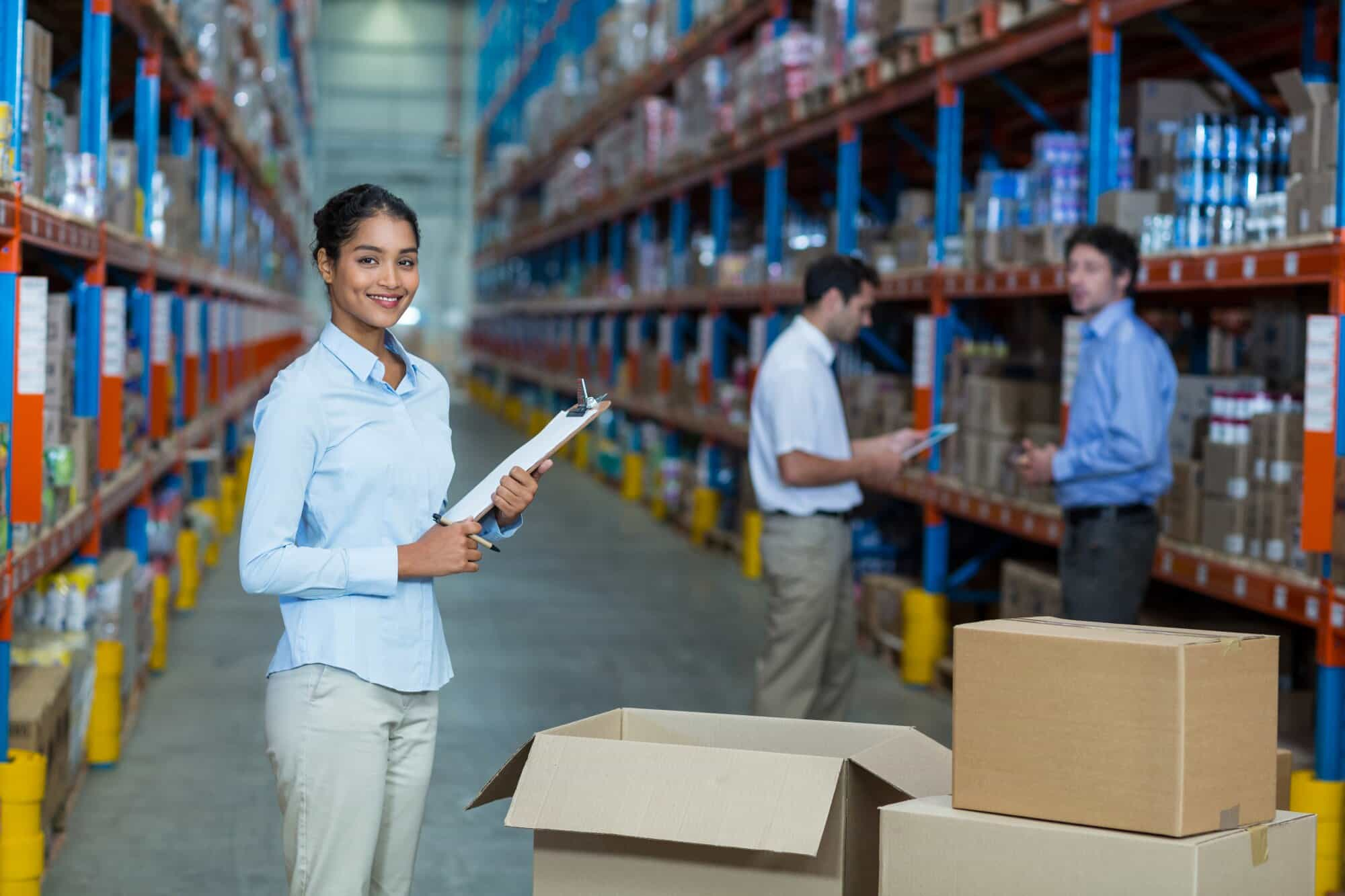Latin America’s Development Bank – previously known as Corporación Andina de Fomento— supports the region’s countries in developing projects related to their domestic logistics systems. This is how the Regional Logistics’ Development Program for Latin America (CAF-LOGRA, for its acronym in Spanish) came to be. This program aims to identify, analyze, promote, carry out, and advance projects that contribute to the competitive performance and development of these systems.
CAF-LOGRA helped design the Logistics Profile of Latin America (PERLOG, for its acronym in Spanish), which analyzes the current status and the potential growth of Latin America’s logistics system taking into account aspects like infrastructure, services, processes, information systems, management capacity, level of institutionalization, and regulation.
The countries assessed by PERLOG’s first stage were Bolivia, Colombia, Ecuador, Mexico, Panama, Paraguay, Peru, and Uruguay. The expectation is for this analysis to cover the totality of countries in Latin America and the Caribbean in the next few years.
Latin American Economy
The distribution and evolution of the Gross Domestic Product (GDP) of the analyzed countries shows a slight tendency towards a reduction of the contribution of the agricultural sector and an increase of the contribution of the service sector.
Despite the economic hardships, all the assessed countries have increased their exports and have kept an upwards trend in their flow of Foreign Direct Investment (FDI) with Colombia, Mexico, and Peru as the largest recipients.
Performance of Logistics
According to the Logistics Performance Index (LPI), Chile and Brazil are the Latin American countries closer to achieve the highest world rating observed in OECD (Organization for Economic Co-Operation and Development) countries. The remaining Latin American and Caribbean countries lag for at least one point.
A lack of infrastructure and quality impact these results and the region’s development of trade. This lack of roads represents a barrier for both domestic and foreign trade and results in an increase in the cost of transportation and logistics services. For example, the domestic freight of containers in Brazil and Colombia is among the most expensive in the world.
Even though the region has the necessary conditions, domestic river and sea transportation are practically non-existing. Furthermore, no airport ranks among the 30 most important in the world in terms of air cargo and the railroads are stagnant because the network is low quality and is mostly used to transport bulk materials.
The following are the main challenges Latin America is facing in terms of structure and offer in the logistics sector:
- High dependency on foreign demand
- Few logistics companies
- Delays caused by customs and trade regulations
- Low automation
- Financing restrictions
- Limited offer of logistics services
- Low quality services (delays and theft, among others)
- Lack of specialized infrastructure
- Low penetration of new technologies
- Mistrust of outsourcing
- Low demand of value-added services
- Decisions based on price instead of service
- Lack of integration in the supply chain
- Low institutionalization of the logistics sector
- Absence of promotion policies
- Service costs distorted by regulations
- Red tape
Imports and Exports
Globally, the exports value of a container in Latin America and the Caribbean is surpassed only by its value in Africa and North America. Among the analyzed countries, there are steep differences in the cost of importing and exporting containers: on the one hand, Panama shows exports prices cheaper than those of Southeast Asia; on the other hand, Paraguay and Colombia stand out as the countries with the highest costs for imports and exports.
Infrastructure
Mexico and Panama possess sound infrastructure, reaching levels like those of Europe. However, in broad terms, the infrastructure of Latin American countries shows many areas of opportunity when compared to the world’s average.
Penetration of New Technologies
Mexico and Panama are the only two countries in Latin America and the Caribbean that rank above the Latin American average in the Index of Penetration of New Technologies in the Enterprise category.
Reference Scenario for Latin America in 2040
The scenario for Latin America for the next years is characterized by a halt in the growth of the GDP: close to 4% per year and less than 3% per capita. This would place the region behind the three main developing regions (East Asia, the Middle East, and Central and East Europe) with levels closer to those of Africa and South Asia.
Latin America would need to embrace a strategy built on three pillars that would imply long-term logistics contributions:
- Achieve a more inclusive and cohesive society by promoting basic logistics improvement strategies and by fostering the logistics inclusion of territories with low integration.
- Help achieve and maintain a greater economic development and competitiveness by a systematic and continuing reduction of logistics costs and by forming an efficient, hierarchical, and integrated system of logistics.
- Strengthen the competition of companies via a greater regional co-operation, by opening the doors to Asia, and by strengthening the regional logistics interaction with the Pacific.
The IDEAL 2013 paper defines the apparition of several macro trends, reactions, or strategic moves in Latin America in the long term:
- Consolidation of China and Asia as the main buyers of natural resources
- Return of manufacturing to North America and the role of Mexico
- The change in infrastructure and technology in the freight market
- Expansion of the Panama Channel, strengthening the role of that country as a logistics hub
- Growing pressure on ports to adapt to a system of strengthened hubs and feeders
- Mobilization along the Pacific coast due to increased relationship with Asia
- Growing concentration of logistics companies
- Opportunities for loads and service hubs for Brazil and the Southern Cone
To summarize, the largest areas of opportunity for Latin America and the Caribbean consist in improving their infrastructure, developing efficient activities and logistics services, and implementing adequate public policies to lower the cost of logistics and improve the performance of the complete supply chain.
